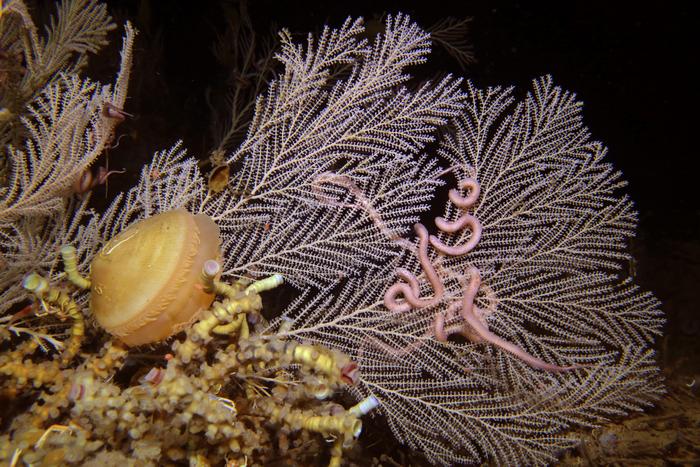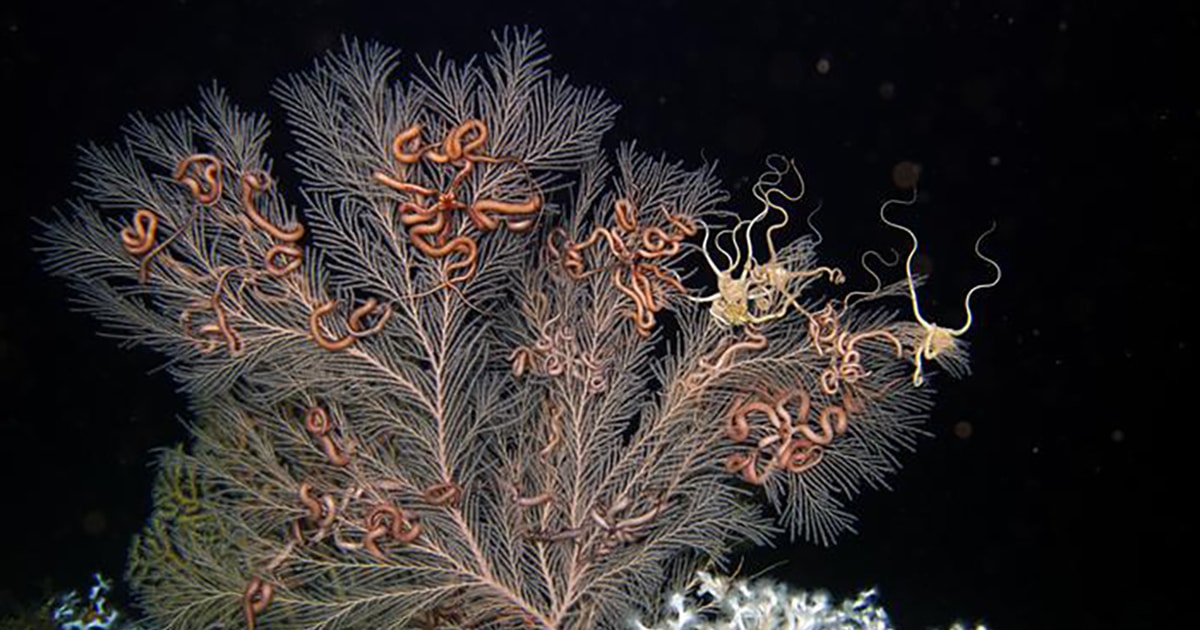The research team examined several colonies of two species of horn corals in the Gulf of Mexico. The species Callogorgia delta and Callogorgia americana are found at water depths between 300 and 900 meters, where it is completely dark. During their analyses, the researchers discovered previously unknown, closely related bacterial species from the class Mollicutes—a group of bacteria that often live as parasites on or in cells of plants, animals, and humans and sometimes cause diseases. Based on genetic analyses, the researchers propose assigning the two species to a new family called Oceanoplasmataceae.
Further investigations revealed that the bacteria are the dominant symbionts of the corals and live in a gelatinous layer of tissue through which nutrients are transported and which serves the immune system. One species (Oceanoplasma callogorgiae) has only 359 genes that code for proteins for different metabolic functions, and the other (Thalassoplasma callogorgiae) has 385 genes. By comparison, the intestinal bacterium Escherichia coli has more than 4,000 such genes, and humans have around 21,000. How the metabolism of the two newly discovered microbes can function with such a slimmed-down genome is still a mystery to researchers: “These bacteria do not even have genes for normal carbohydrate metabolism (i.e., for obtaining energy from carbohydrates—something that every living creature has),” says Baums. According to the investigations, they can only use the amino acid arginine as an energy source, which they receive from the host coral. “However, only very little energy can be gained from the breakdown of the amino acid. It is really astonishing that this is enough for the bacteria to survive,” says Baums. The bacteria also receive other essential nutrients from their host.

It is unclear whether the microbes are pure parasites or whether the corals also benefit from their symbionts. According to the genetic analysis, the two types of bacteria have various defense mechanisms to remove foreign genetic material—so-called CRISPR/Cas systems, which are also used in biotechnology to edit genes. The researchers suspect that these abilities could also be useful for the host corals to ward off pathogens. Another possibility is that the bacteria provide their host with nitrogen by breaking down arginine.
For Baums, whose research focuses on both the ecology and evolution of corals, the symbionts offer an opportunity to gain insights into the history of this diverse group of animals. “I always find it amazing that corals inhabit so many different habitats, even though they are very simple animals in terms of their structure,” says the researcher. The symbionts are crucial to corals’ ability to adapt to different environmental conditions: “They provide metabolic functions that the corals themselves do not have,” explains Baums. Tropical corals in shallow, light-filled waters, for example, depend on algae that carry out photosynthesis and provide the animals with food and energy. Cold-water corals, many of which live in the dark and nutrient-poor deep sea, probably depend on bacteria to convert nutrients or extract energy from chemical compounds.
The evolutionary ecologist and coral expert Baums, who conducts research at the Helmholtz Institute for Functional Marine Biodiversity at the University of Oldenburg (HIFMB), holds a joint professorship at the University of Oldenburg and the Alfred Wegener Institute, Helmholtz Center for Polar and Marine Research in Bremerhaven. In addition to Baums and Vohsen, researchers from the Max Planck Institute for Marine Microbiology in Bremen, the University of Kiel, and the Pennsylvania State University were also involved in the current study.
Original publication: Samuel Vohsen et al.: “Discovery of deep-sea coral symbionts from a novel family of marine bacteria, Oceanoplasmataceae, with severely reduced genomes,” Nature Communications; 15, 9508 (2024). doi.org/10.1038/s41467-024-53855-5

